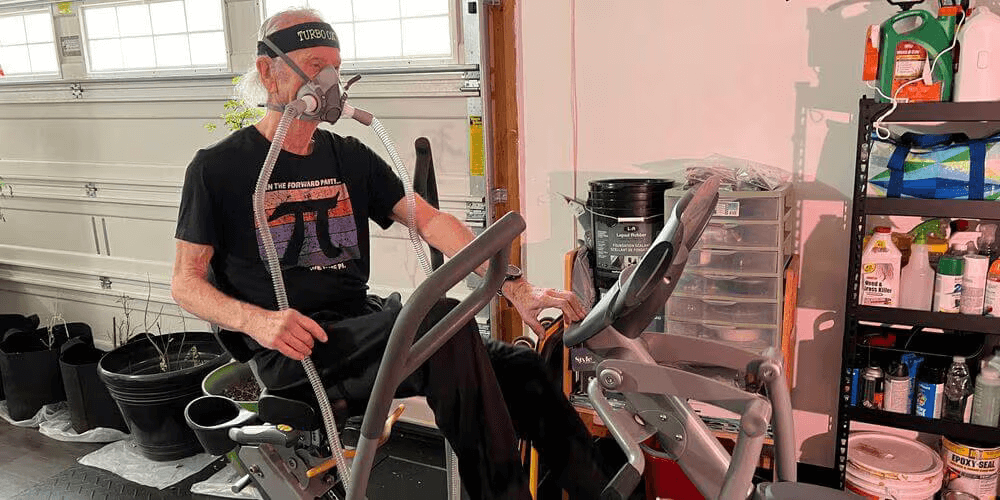Differences Between Oxygen Therapy and EWOT
Oxygen Therapy and Exercise with Oxygen Therapy (EWOT) are two distinct approaches with varying objectives in promoting well-being.
Oxygen Therapy is primarily a medical intervention designed to provide a continuous and controlled oxygen supply to users facing respiratory issues, aiming to increase the oxygen saturation in the bloodstream. On the other hand, Oxygen Enhanced Exercise or Exercise with Oxygen Therapy (EWOT) is a fitness-oriented approach that involves inhaling higher concentrations of oxygen while exercising to improve performance, energy, endurance, and overall wellness.
The setting for oxygen therapy generally involves clinical or home environments and oxygen is delivered either in continuous or pulse dose flow settings. In contrast, EWOT is generally practiced in the comfort of your own home or wellness centers, incorporating an Oxygen Reservoir Bag, specialized mask and accessories to facilitate Oxygen Enhanced Exercise.
Oxygen therapy requires prescriptions from healthcare professionals, targeting conditions such as chronic obstructive pulmonary disease (COPD) or respiratory failure whereas individuals voluntarily choose EWOT for improving their endurance, energy, and overall fitness.
Basically, oxygen therapy is a passive procedure that is suitable for persons who are unfit/unwell to workout during the administration of oxygen. Conversely, EWOT is an active process that can be integrated into your daily exercise routine.
| Feature | Oxygen Therapy | Exercise with Oxygen Therapy (EWOT) |
|---|---|---|
| Primary Purpose | Medical Oxygen Support for respiratory issues | Enhancing athletic performance, endurance and fitness |
| User Target | Suitable for persons who are reluctant/unfit to exercise during O2 administration | - Athletes - Fitness enthusiasts - Wellness seekers - People with low immunity |
| Mechanism of Action | Passive- No activity is required | Active |
| Oxygen Delivery | Through oxygen mask or nasal cannula connected to the concentrator | Through specialized mask connected to the Oxygen Reservoir Bag |
| Equipment | - Medical grade oxygen concentrator - Medical grade accessories |
- Oxygen concentrator - Oxygen Reservoir Bag - Specialized Mask - Stationary Exercise Equipment |
| Prescription Requirement | Needs prescription with a specified oxygen flow rate | No need of prescription |
| Illness Model/Wellness Model | Illness model | Wellness model |
In essence; the key difference lies in the targeted application, user base, equipment design, prescription requirement, mechanism of action, operational dynamics, and the overarching goal of each system — whether it's for medical support or fitness enhancement.




